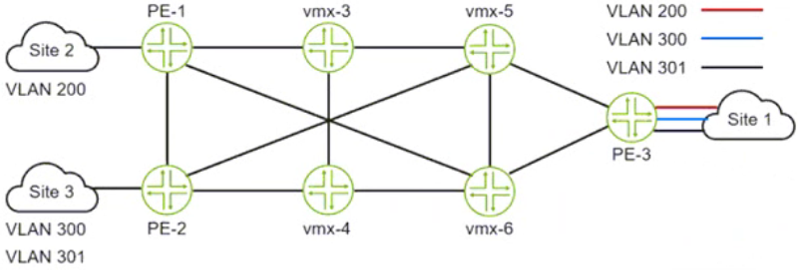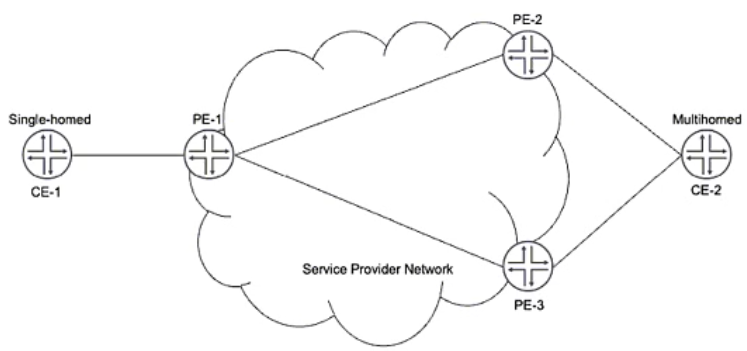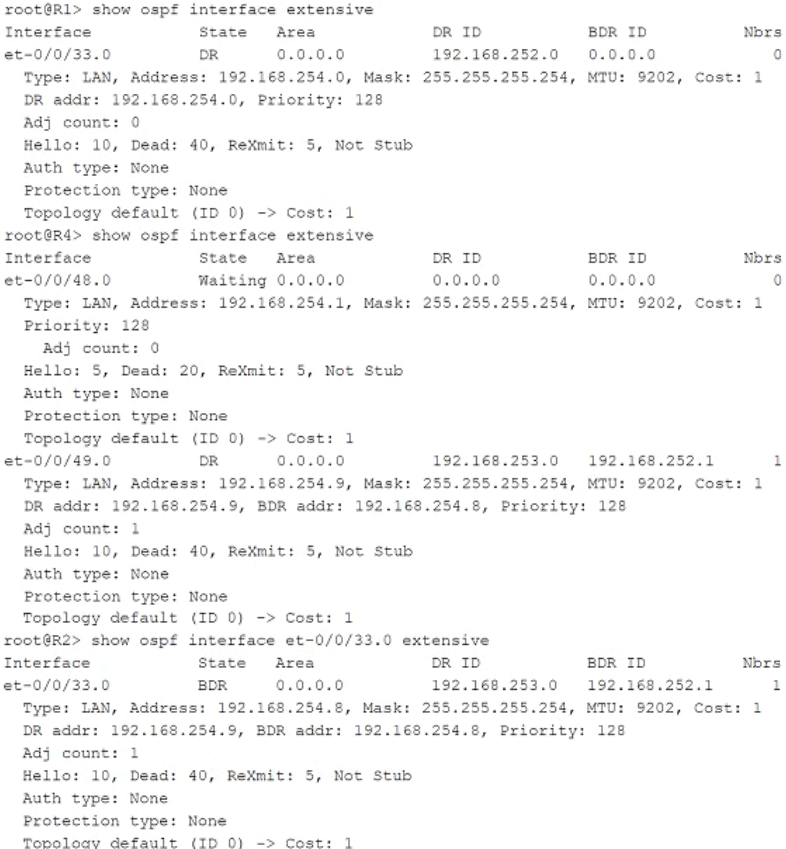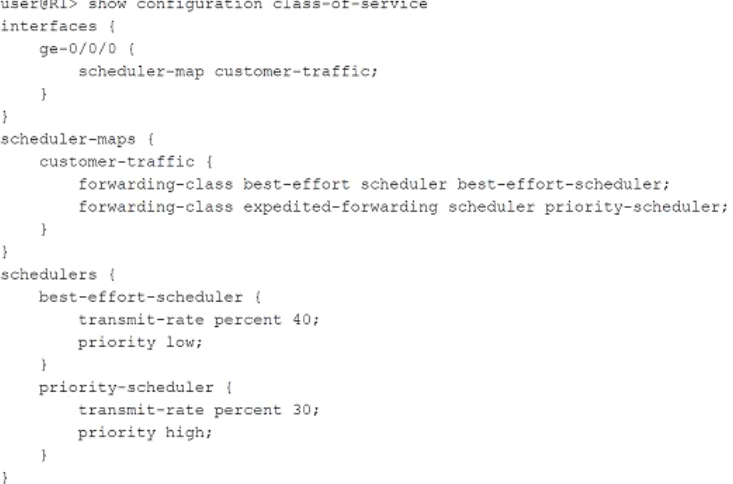Juniper jn0-664 practice test
service provider routing and switching, professional (jncip-sp)
Last exam update: Mar 07 ,2025
Question 1
Your network is receiving the 203.0.113.0/24 network using EBGP from AS 64500 and AS 64501. Both of these advertisements have identical local-preference values, AS-path lengths, and BGP origin codes. You want to influence the way your AS sends traffic to the 203.0.113.0/24 network.
In this scenario, which attribute would you consider next when selecting the best path?
- A. router ID
- B. MED value
- C. peer IP address
- D. IGP metric
Answer:
b
Question 2
Click the Exhibit button.
Referring to the exhibit, CE-1 is providing NAT services for the hosts at Site 1 and you must provide Internet access for those hosts.
Which two statements are correct in this scenario? (Choose two.)
- A. You must configure a static route in the main routing instance for the 203.0.113.1/32 prefix that uses the VPN-A.inet.0 table as the next hop.
- B. You must configure a static route in the main routing instance for the 10.1.2.0/24 prefix that uses the VPN-A.inet.0 table as the next hop.
- C. You must configure a RIB group on PE-1 to leak a default route from the inet.0 table to the VPN-A.inet.0 table.
- D. You must configure a RIB group on PE-1 to leak the 10.1.2.0/24 prefix from the VPN-A.inet.0 table to the inet.0 table.
Answer:
bc
Question 3
Click the Exhibit button.
Referring to the exhibit, what do the brackets [ ] in the AS path identify?
- A. They identify that the autonomous system number is incomplete and awaiting more information from the BGP protocol.
- B. They identify that a BGP confederation is being used to ensure that there are no routing loops.
- C. They identify an AS set. which are groups of AS numbers in which the order does not matter.
- D. They identify the local AS number associated with the AS path if configured on the router, or if AS path prepending is configured.
Answer:
c
Question 4
Click the Exhibit button.
You want Site 1 to access three VLANs that are located in Site 2 and Site 3. The customer-facing interface on the PE-1 router is configured for Ethernet-VLAN encapsulation.
What is the minimum number of L2VPN routing instances to be configured to accomplish this task?
- A. 1
- B. 2
- C. 3
- D. 6
Answer:
a
Question 5
Click the Exhibit button.
You have an EVI implemented between PE-1, PE-2, and PE-3 to allow communication between CE-1 and CE-2. CE-2 receives unicast traffic from CE-1 on both links to PE-2 and PE-3. When CE-1 sends broadcast traffic. CE-2 receives it on only one of the multihomed links.
Referring to the exhibit, which EVPN route type enables this behavior?
- A. Type 2
- B. Type 4
- C. Type 1
- D. Type 3
Answer:
b
Question 6
A router running IS-IS is configured with an ISO address of 49.0001.00a0.c96b.c490.00.
Which part of this address is the system ID?
- A. c96b.c490 is the system identifier.
- B. c490 is the system identifier.
- C. 00a0.c96b.c490 is the system identifier.
- D. 0001.00a0.c96b.c490 is the system identifier.
Answer:
c
Question 7
Click the Exhibit button.
You have an OSPF environment. You have recently added a router called R4 that is directly connected to R1 and R2. You discover that R4 is only peering with R2.
Referring to the exhibit, how would you correct the peering?
- A. Adjust the Hello Interval on R1 and R2 to match the Hello Interval on R4.
- B. Change the MTU size on R1 and R2 to be 22 bytes higher than R4's MTU size.
- C. Adjust the Dead Interval on R4 to match the Dead Interval on R1 and R2.
- D. Adjust the Priority on R1 to be lower than the Priority on R4.
Answer:
a
Question 8
Which two EVPN route types are used to advertise a multihomed Ethernet segment? (Choose two.)
- A. Type 2
- B. Type 4
- C. Type 3
- D. Type 1
Answer:
bd
Question 9
An interface is configured with a behavior aggregate classifier and a multifield classifier.
How will the packet be processed when received on this interface?
- A. The packet will be processed by the MF classifier first, then the BA classifier.
- B. The packet will be processed by the BA classifier first, then the MF classifier.
- C. The packet will be discarded.
- D. The packet will be forwarded with no classification changes.
Answer:
b
Question 10
Click the Exhibit button.
Which two statements are correct about the class-of-service configuration shown in the exhibit? (Choose two.)
- A. Incoming traffic will be classified using the default classifier.
- B. The best-effort queue can never transmit more than 40% of the total bandwidth on the ge-0/0/0 interface, even if that bandwidth is available.
- C. Incoming traffic will not be classified because no classifier exists in the configuration.
- D. The best-effort queue can transmit more than 40% of the total bandwidth on the ge-0/0/0 interface, if no other queue is using that bandwidth.
Answer:
ad